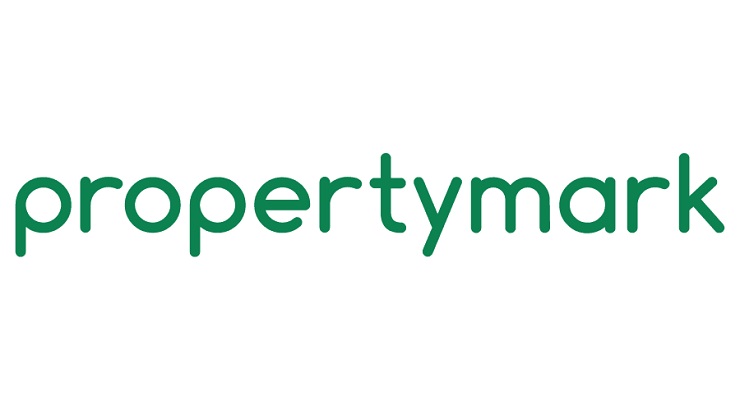BREAKING PROPERTY NEWS – 14/04/2022
Daily bite-sized proptech and property news in partnership with Proptech-X.
Property market stabilises as supply pressures ease, according to Landmark’s Property trends report
Landmark Information Group analyses residential property data from Q1 2022 in England and Wales.
Landmark Information Group’s latest market data shows the housing market is bouncing back to 2019 levels, following a year of disruption and transaction bottlenecks. The newly-released Q1 Property Trends Report paints a positive picture for home-movers as supply pressures ease, and workloads normalise for property professionals, potentially decreasing property transaction times for those hoping to move in 2022.
The report, which uses Landmark’s data to reflect on England and Wales market activity during January, February and March of 2022, shows that whilst supply remained a challenge at the start of the year, pressure is now starting to be released. With listing volumes returning to 2019 levels by the end of Q1, this shrinking gap between demand and supply is set to continue into Q2, relieving some of the inflationary pressure on house prices.
The return to normalcy for the market is reflected in the transaction pipeline, with Sold Subject to Contract (SSTC) volumes in February and March finally matching 2019 levels, as January seller activity converted to conveyancing instructions. This more stable market is allowing conveyancing lawyers to manage workloads more effectively, in contrast to the rapid fluctuations in volumes across 2021 which contributed to huge bottlenecks and stalling transactions for home-movers across the country.
Key findings:
Property Listings: After a slow start to the year, beset by surging Covid-19 cases, confidence appears to be returning to the market. The year began with supply levels challenges, but a steady uptick took supply 2% over 2019 rates by the end of the quarter. This promising trend signals more choice, releasing pent-up supply from hesitant home-movers and potentially reversing the cycle we have seen in 2020-21.
SSTC volumes: A return to pre-Covid levels, with minimal fluctuation in February and March, suggests that conveyancers are experiencing steady new business after the drama of 2021’s SDLT deadline. After a quiet start to the year as a result of the supply-squeezed market, by the end of Q1 SSTC levels were at the same rate as 2019.
SSTC compared to listings: Demand and supply are broadly returning to more stable 2019 levels, with the gap appearing to narrow, potentially due to increased market confidence.
Ratio of completions to instructions: The Completion to Instructions Ratio1 (CIR) traditionally starts low at the beginning of the year, as conveyancers pick up the slack after the inevitable lull over the festive period – in Q1 2022 we see refreshing stability after a busy December.
Landmark CEO, Simon Brown said: ‘As we analyse the data from the first quarter of 2022, it’s encouraging to see the beginnings of a calmer, and crucially, more consistent market. These less turbulent conditions will help to ease the pressures in the transaction process for home-movers in the next few months as increased predictability makes workloads easier to manage.
But despite the hopeful signs, the broader factors – from the burgeoning cost-of-living crisis to geopolitical instability – are yet to fully play out. This makes it ever-more crucial that the industry is able to evolve and adapt to external shocks, to minimize the impact on home-movers.’
Home.co.uk: Buyer frenzy accelerates
While spring is traditionally known for more optimistic pricing and an increase in the pace of the market, this year looks set to break all records, according to Home.co.uk’s Asking Price Index for April.
Already the Typical Time on Market has dropped to an all-time low and prices are surging. At the same time, supply remains very low thereby making for frenzied market conditions.
Market commentators who were predicting a slowdown this year (and there have been several) will be regretting their hasty words. It is difficult to understand how they could come to such a conclusion given that interest rates are still very low; the hikes forecast by the Bank of England are miniscule by historic standards; economic uncertainty is driving safe-haven investments (especially property); and, at current levels, inflation is rapidly eroding mortgage debt.
The fact is that the 2022 UK property market is continuing to follow the trend set in 2021, albeit at an even more frantic pace. In particular, Typical Time on Market for the East Midlands is indicating an unprecedented rate of turnover and, consequently, the second highest annualised price growth, just behind the South West. In this region too, unsold properties are spending very little time on the market (another record low), and huge reductions in marketing times are evident in all other regions. The largest year-on-year percentage reductions are to be found in the North East, Scotland and Wales. This is highly significant as drops in marketing time usually portend strong price growth in the near term.
Scarcity also persists across all regions with the average stock total drop at around 23% year-on-year. All current evidence, therefore, suggests that strong price growth will occur during the coming months.
Following a brief period of consolidation, rents are being hiked again (seemingly with increasing rapidity) across all regions. The mix-adjusted average for the UK has jumped to 18.5% over the last twelve months, with much of this overall increase caused by the stratospheric rise in Greater London, which now indicates an annualised rental growth of 37.1%. Scarcity of property available to let is apparent in every region.
The annualised mix-adjusted average asking price growth across England and Wales is now at +6.4%; in April 2021 the annualised rate of increase of home prices was 7.4%.
Headlines
- Property is moving through the market at a record pace due to vast buyer demand. The Typical Time on Market for unsold property in England and Wales has plummeted to just 55 days (median), 31 days less than in April 2021 and the lowest such figure in the history of this Index.
- Consequently, asking prices across England and Wales rose a further 0.9% overall in March, while the average price in Yorkshire jumped a massive 1.7%.
- The total stock of property for sale in England and Wales remains extremely low despite a small nudge up again for the third consecutive month.
- Monetary inflation is high and climbing, thereby making real home price growth progressively more negative despite the apparent high nominal growth.
- Marginally fewer vendors entered the UK market last month compared to April 2021 (-3%), although there were significant regional differences. The biggest fall was in London (-18%) while the biggest rise by far was the North East with a 14% increase in new listings year-on-year.
- The South West property market now leads in annualised regional price growth (+9.6%), narrowly ahead of the East Midlands (+9.5%). Only these two regions show growth above the latest RPI (ex housing) inflation figure.*
- Rents in Greater London continue to soar. Scarcity due to a return to urban living has pushed annualised growth in asking rents to a staggering 37%. The rental property drought is worsening in the capital region with new instructions down 55% last month compared to April 2021.
- Central London rents continue to skyrocket. The greatest rises in asking rents over the last twelve months aside from the City (+81%) are in Camden (+53%) and Kensington (+52%) as supply in these boroughs plummets.
- Scarcity of rental properties remains a problem across the UK and this is creating significant upward price pressure. Rents are up in every region and by 18.5% overall across the UK since April last year.









